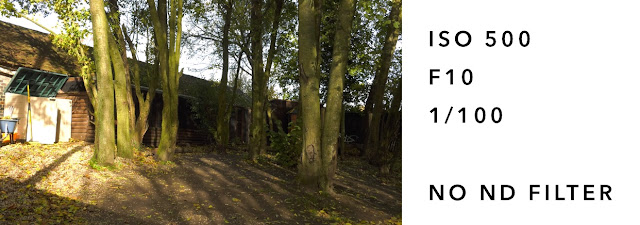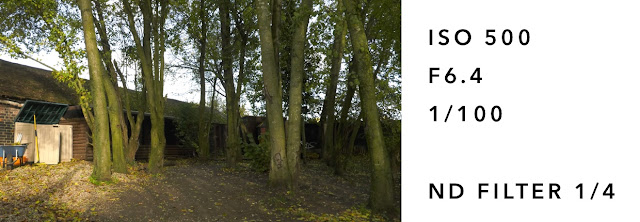Blocking and Lighting Tests
The purpose of this third test shoot was to block out a scene in order to work out how the action would pan out based on the script and storyboard. As I created the storyboard before the director blocked out the scene, the blocking is slightly different to the action within the storyboard. I will update my storyboard based on this blocking and on the final version of the script (as the current storyboard is based on the third version of the script). The main purpose of blocking this scene was to help me visualise how it would pan out with the cinematography and for the director to work out the camera and character positions.
This blocking test shoot also enabled me to see how practical my proposed shot types were and to see how well this fit in with the desired shooting style. Through doing this test shoot, I found that the shooting style worked well to embody the natural, realistic feel as the pans and zooms enabled me to achieve a spontaneous, observational look. As well as this, performing this test shoot enabled me to try out using the camera in the exact shooting style I am aiming for. The purpose of the other test shoots has been to test which camera would be best for the desired visual look or to see how specific scenes pan out, however, this test shoot enabled me to put the entire shooting style together to see how achievable this is. As a result, I have found that this shooting style works very well using the Panasonic DVX200 as the controls are all very accessible, enabling me to achieve the proposed shots.
Despite going for a realistic style, I needed to test lighting as this can still be used to achieve a natural result. Following the information provided by DoP Jamie Cairney, I tested the artificial lighting equipment in ways that mimicked the natural or practical lighting of the setting in order to maintain the realistic, observational style.
Before testing the lighting, I created lighting maps which are available to see in the location mapping blog post. This helped me to see where the natural lighting in each location would come from by mapping out where north, east, south and west were in each location - this would tell me how the light moves throughout the day and, therefore, how each location is affected by this. I will then combine the information about where the natural lighting is coming from with the chosen lighting equipment in the shot list to explain how each scene will be lit.
Firstly, I tested different lighting in a naturally well lit interior environment. For this location, the natural lighting came mainly from the south-east facing double doors at the back of the location and the west-north-west facing windows at the front of the location (behind the subject's head).
I set the Panasonic DVX200 to some pre-tested settings that I knew would work well to produce a well exposed image - this way I could have an objective view on which lighting equipment worked best. The settings I used were: ISO 500, aperture F/6.4, shutter speed 1/60 and no ND filter. These settings can be seen naturally in the first image labelled 'no equipment'. This produced a well exposed yet flat image.
Next, I tested using an Interfit reflector to bounce the natural light back onto the subject. This produced the best lit, most natural looking result as the image uses entirely natural light (just using a reflective surface to direct it back into the shot). The reflector was positioned facing opposite the west-north-west facing window which meant that instead of the subject being slightly silhouetted by this window, he ended up being lit by the reflected light.
I then tested using two aputure LED lights, one on a medium setting of 60 and the other on a high setting of 80, however, this made the subject appear unnaturally lit which would defeat the desired natural and realistic look of the production. These LED lights were positioned in front of the south-east facing double doors with the aim of supplementing this light, but it just made the image look unnatural and artificial.
The results of the interior test shoot:
I then tested the lighting equipment in a night shoot to work out how to light the night scenes within the production. I tested using a reflector, one aputure LED light and two aputure LED lights. I used the Panasonic DVX200 on the settings: ISO 1000, aperture F/5.3, shutter speed 1/50 and no ND filter. The reflector provided no additional light to the scene, allowing these settings to be observed in the first image and ruling out the option of using the reflector in night scenes.
I then tested using just one aputure LED light on a medium brightness setting of 60 and a colour temperature of 5000K. The aim of this was to mimic street lighting, however, using just one light was not enough to expose the subject well enough. The warm colour temperature worked well though, meaning I continued to use this colour temperature when setting up the second aputure LED light.
When lighting the subject with two aputure LED lights, I kept the original light on the same settings and added another light at a setting of 80 and a colour temperature of 5000K. This provided an image with a well illuminated subject which still retained the natural look which could look as if the subject was merely lit by street lighting.
Below are the results of this lighting test. The chosen equipment for night shoots will be two aputure LED lights as this shows the best result:
I also tested lighting within the pub location as this proved to be a dim lit location, meaning artificial lighting would be necessary to illuminate the subjects. I tested three different options: no additional artificial light (just using the practical lighting within the pub - it should also be noted that there were additional christmas lights which would not be there during the actual production), using 2 aputure lights on a medium (60) and high (80) setting both set to a colour temperature of 5000K and using 2 aputure lights on a high (80) setting both set to 5000K.
The settings I used for this shoot were: ISO 800, aperture F/5.3, shutter speed 1/60 and no ND filter.
As shown below, using just the pub's practical lighting produced a dull image in which the subject is barely visible. Although this is the most natural way of lighting the set, this produced the most unnatural result - proving that artificial lighting is sometimes better and necessary.
Using both aputure lights, one on a medium setting of 60 and the other on a high setting of 80 both set to 5000K produced the best result. Whilst the subject isn't as well illuminated as the third test, this produced the most natural looking result as if the subject was just being lit by lighting within the pub - therefore, this lighting will be used for the pub scene.
Using both aputure lights on the high setting at the same colour temperature produced an unnaturally lit look which looks artificial and, therefore, takes away from the desired realistic look of the production.
Something to note about this location is the reflective surfaces such as the TV screen in the background, I must ensure that none of the crew, camera equipment or lighting equipment can be seen in this during the shoot.
The final lighting test I performed was an exterior shoot with a reflector and an aputure LED light. From the other test shoots, I had thought of just using natural light for exterior daylight scenes as this proved to produce a well exposed shot on the camera, however, I still wanted to test using lighting equipment to see if this would produce a more enhanced (yet natural) look.
I started by testing the reflector and reflecting the natural light from the north and west back onto the subject. This produced the best result as it illuminated the subject slightly better than just the natural daylight and helped to retain the natural look which is key to the production of VET-MAN.
I then tested using one aputure LED light on a medium setting of 60 and a natural colour temperature of 4200K. This made the subject look too artificially lit and unnatural which goes against the desired realistic look.
From this test shoot, I have decided on the lighting I will use in each of the scenes of the production - I will write this information in the shot list so I know how each scene is lit when it comes to the production.
The daylight scenes (both interior and exterior) will be lit naturally and supplemented with an interfit reflector.
The pub scene will be lit with the aputure LED lights.
The night scenes will be lit with the aputure LED lights.





























